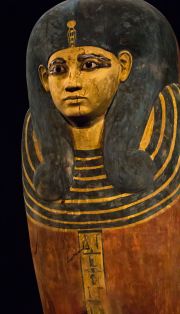The king in Ancient Egypt, despite his solar nature, was also a human being. After dying, the pharaoh became also a corpse, so a mummy.
Therefore it was inevitable to asimilate the dead souvereign with Osiris. And he required also a resurection following the belief of Ancient Egypt. Even Akhenaten needed it.

Sarcophagi of Hatshepsut and Amenhotep II.
Royal sarcophagi in Ancient Egypt needed also protection for the Pharaoh in the same way particular coffins did. For that reason, Isis and Nephthys, as the mourners of the dead Osiris, were present also at both ends of sarcophagi of kings of the XVIII dynasty.
But what happenend during the Amarna Period?
Continue reading in http://www.mariarosavaldesogo.com






